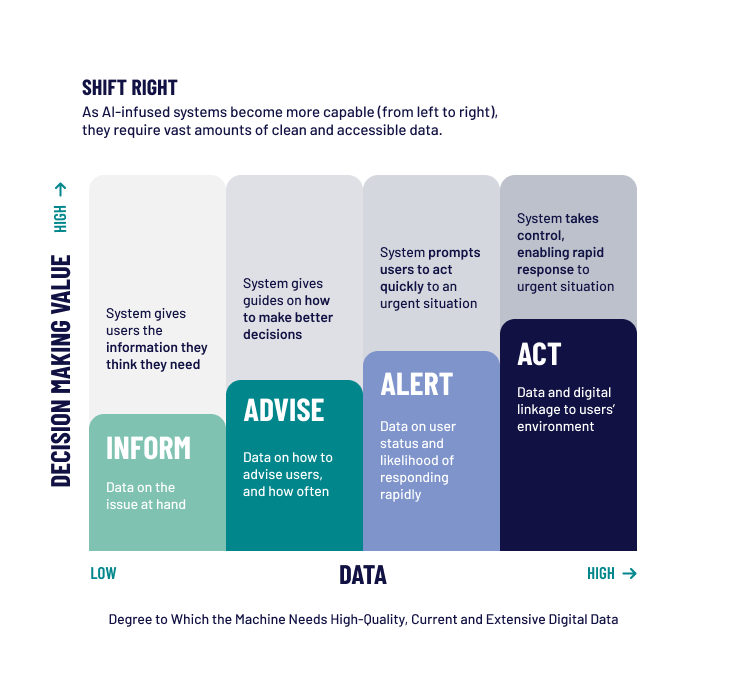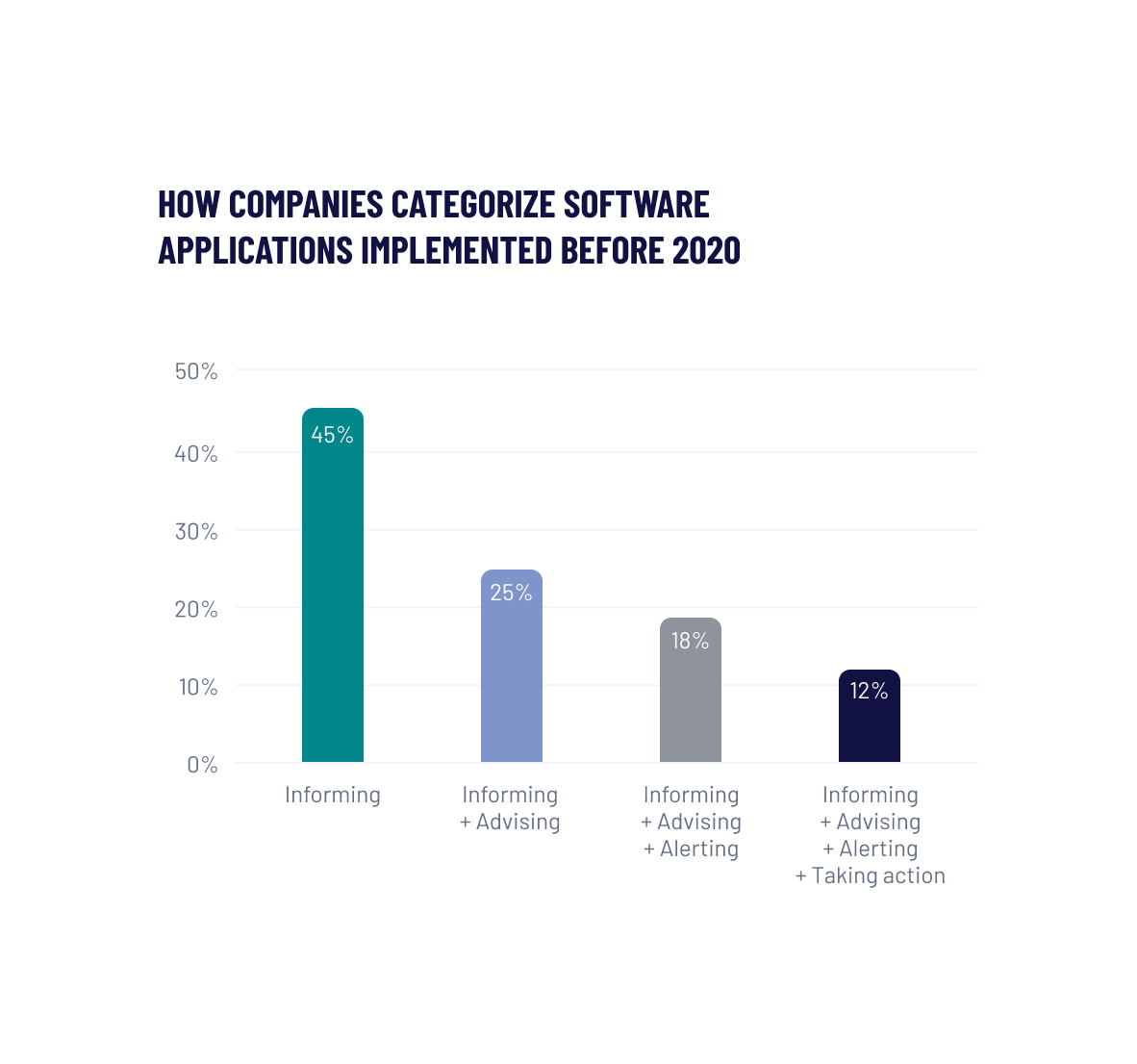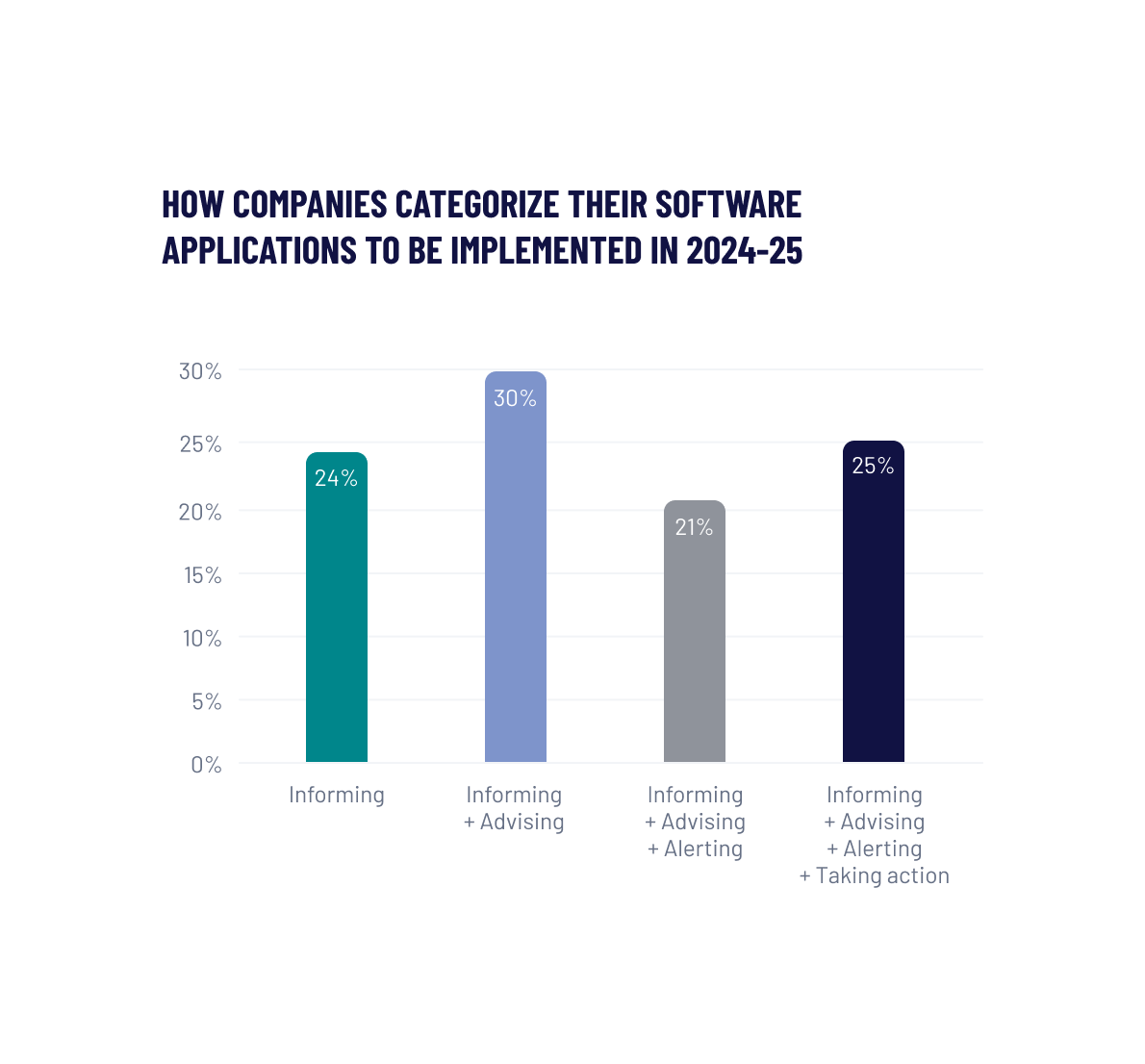Implementing AI successfully typically hinges on one crucial element: data. Without clean, well-governed and ample data, AI systems can struggle to deliver accurate insights and meaningful actions. In this article, we’ll explore essential tips for harnessing data effectively in AI implementation.
Make Sure Your Data is Clean
Although this is an age-old challenge, organizations need clean data (as well as the right data) to separate signal from noise. This will allow them to build a semantic layer over their structured, partially structured and unstructured data (text documents, video, static imagery, social media) to determine context and deliver meaningful advice, alerting and taking action. Strong business rules operating on clean data are essential for determining context particularly in the alert and act phases.
Have good governance to ensure that as you pump new data into your AI engine or deploy new systems with different schemas, all data remains consistent and of high quality. Generative AI can help to cleanse data at scale and speed. It can separate the so-called signal from the noise. It can also fix poorly labeled data. But make sure to have a human in the loop to double-check the changes. This saves time and effort in ETL (extract, transform and load), data integration and strong binding. You can’t build systems that advise, alert and act without having clean data sets.
Collect More Data Than You Think You’ll Need
Data storage costs are relatively inconsequential. New and more intuitive technology has made it easier to collect and store. Consider an insurance tech client who wanted to use location-specific hotel booking and cost data that it had collected in the last 20 years to understand historical norms on hotel rates. By doing so, it will be able to gauge additional living expenses and more quickly advise customers on affordably temporary places to live if their homes are damaged by disasters. The data is stored but has never been used. This advisory application has propelled its business case for AI.
Ensure You Have the Relevant Data As You Evolve
Using the framework of inform > advise > alert > act, we’ve found that more corporate AI applications have been following this same evolution.

Notice the change in categorization of software application implementations in recent years using the charts below.


During the inform stage, you’ll want to focus on data on the issue at hand. This includes, for example, collecting customer feedback through surveys to understand satisfaction with a specific product. In the advise stage, you’ll want to ensure you have data on how to advise users and how often. For example, use historical sales data to recommend the optimal time for sales teams to follow up with potential leads. When you’ve moved to the alert stage, you should have data on user status and the likelihood of responding rapidly, such as utilizing real-time data from warehouse sensors to detect and alert staff about inventory shortages or equipment malfunctions. Finally, at the act stage you should have data and digital linkage to the users’ environment. Consider insights such as leveraging IoT data from connected devices in smart homes to automate and optimize energy usage and security settings.
Harnessing data effectively is the cornerstone of any successful AI implementation. By prioritizing clean data and continuously collecting and evolving that data, organizations can unlock the true potential of AI. The journey from data collection to actionable insights is an evolution, but with the right approach, your AI initiatives will thrive, driving innovation and delivering immense value.
Learn more about our data, analytics & AI capabilities.

Analysis Paralysis in AI Adoption
Learn why endless discussions and the relentless pursuit of flawless data are actually costing you valuable time, insights, and competitive advantage – just like it did for giants like Kodak and Blockbuster.

Don’t Take Product Out of the Equation: How to Nail Your AI Implementation
AI isn't just about the technology, it's about solving real problems and delivering real value. One way to do that is to keep product at the forefront during your AI implementation. Learn more about why having a product-first mindset is so important in this article by Principal Product Strategist Heather Harris.

Navigating AI in Banking and Financial Services: A Risk-Based Rebellion for Leaders
Every shiny AI use case in regulated industries has a shadow: governance, compliance, model risk, ethics, bias, explainability, cyberattack vectors and more. It's not that organizations and leaders don’t want AI, it’s that they’re paralyzed by the political, regulatory, and operational realities of deploying it. Sparq's Chief Technology Officer Derek Perry and VP, BFSI Industry Leader Rob Murray argue we need to change that. Check out this article to learn how to actually ship production AI use cases in regulated environments.

Five Important Questions to Ask Before Starting Your AI Implementation
Creating a lasting impact with AI requires more than just technical output. In this article by Principal Product Strategist Heather Harris, learn five questions to ask before starting an AI implementation so it can deliver long-term business value.
